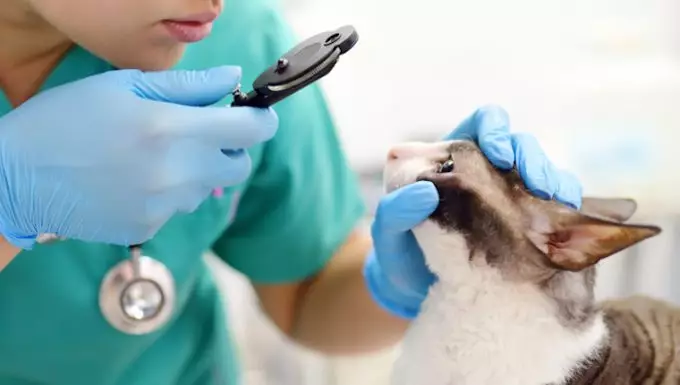As pet owners, we often bear witness to the health concerns that our feline companions face. One such condition that can significantly affect a cat’s quality of life is the presence of excess blood cells in the eyes, known clinically as hypopyon and lipid flare. This article will delve into what causes this condition, how to recognize its symptoms, and explore both diagnosis and treatment options.
The symptoms associated with excess blood cells in the eyes of cats can manifest in various ways and often vary from one feline to another. Common indicators include a swollen cornea, a noticeably swollen iris, and a cloudy appearance in the eyes. Additionally, you may observe behaviors that indicate discomfort such as excessive tearing, twitching, or even visible signs of pain like squinting.
In more severe cases, you may notice bloodshot eyes, the presence of lesions, or a protruding inner eyelid. Moreover, vision impairment can also raise concerns, prompting immediate veterinary consultation. Being alert to these potential symptoms is crucial, as early detection and intervention can lead to a better prognosis.
Hypopyon and lipid flare are often symptoms of more serious underlying health issues, rather than standalone conditions. Various causes have been identified, including uveitis—an inflammation of the uveal tract—and hyperlipidemia, which refers to elevated lipid levels in the blood. Other significant causes include the presence of ocular tumors, infections such as toxoplasmosis or bacterial invaders, and systemic issues related to feline leukemia virus (FeLV), and feline immunodeficiency virus (FIV).
Furthermore, hypertension can also play a role in this ocular condition, highlighting the interconnected nature of feline health. Understanding these underlying causes is critical not only for appropriate treatment but also for preventing recurrence.
When faced with potential signs of excess blood cells in a cat’s eyes, it is essential to seek prompt veterinary diagnosis. A skilled veterinarian will likely start with an extensive discussion about your cat’s symptoms, along with a thorough medical history that includes past incidents, current medications, and overall health status. Following this, a detailed physical and eye examination will be performed, including blood and urine tests to assess the cat’s overall health and rule out other underlying conditions.
Eye fluids may also be collected for analysis, providing critical data that can assist in identifying the root cause. This multi-faceted approach to diagnosis is essential, ensuring that the treatment plan is tailored to meet your cat’s specific needs.
The treatment for excess blood cells in the eyes varies significantly based on the identified cause. For instance, in cases associated with dietary issues such as hyperlipidemia, dietary changes including a low-fat, low-calorie regimen may be recommended. On the other hand, if inflammation is the primary concern, anti-inflammatory medication could be prescribed to alleviate symptoms and tackle the underlying inflammation.
It’s imperative to follow your veterinarian’s instructions meticulously regarding medication—adhering to prescribed dosages and completing the entire course of treatment to ensure a thorough recovery. Regular follow-up appointments will be necessary to monitor the condition and prevent recurrence, providing peace of mind for both the pet and owner.
Excess blood cells in a cat’s eye pose a significant health threat and can lead to long-term vision issues if not addressed promptly. Recognizing the symptoms, understanding potential causes, and seeking timely veterinary care are vital components in managing this condition effectively. As responsible pet owners, our vigilance and proactive approach can safeguard the health of our beloved cats, fostering a happier and more comfortable life for our feline friends. If you suspect your cat may be suffering from this or any health-related issues, do not hesitate to consult a veterinarian for a comprehensive assessment and treatment plan.
